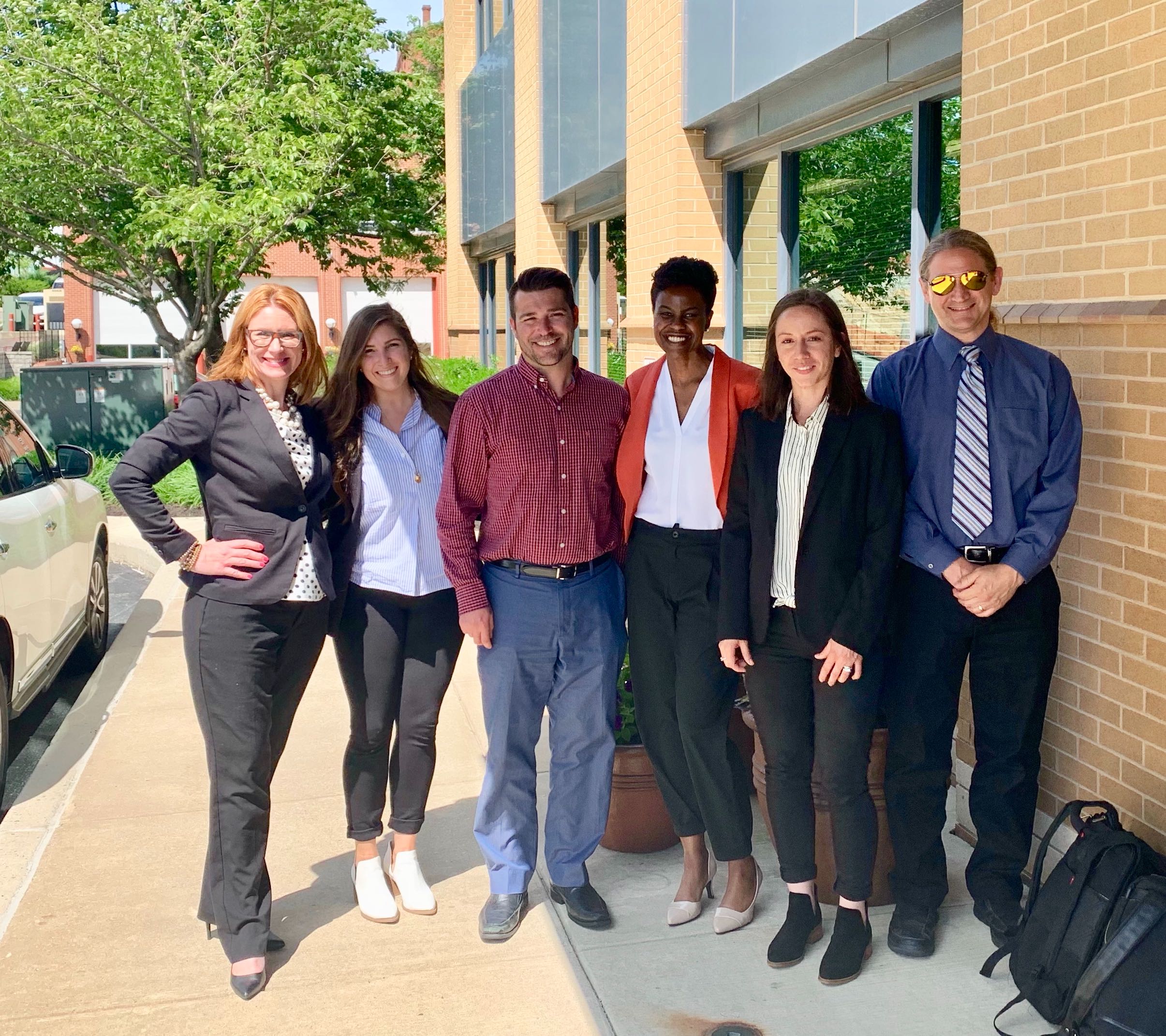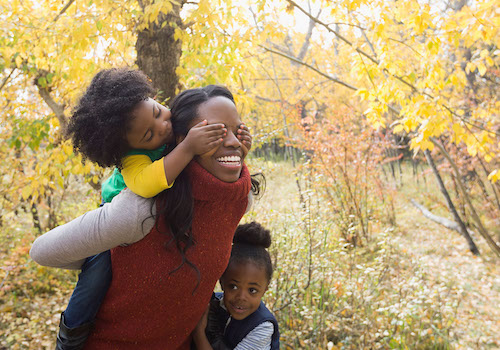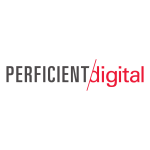Interview with Casey Lewis, Erin Rushman, Sheyra Kelley, Mackenzie DeWitt, Perficient Digital, USA

Interview with Andrew Seaton, Director of Mint Films, AUS
August 16, 2019
Interview with Hatem Al Akad, Donghoon Lee, Erica Yoshimura from Miami Ad School San Francisco, US
August 19, 2019
Casey Lewis, Erin Rushman, Sheyra Kelley, Mackenzie DeWitt
A creative agency with deep roots in technology and execution, Perficient Digital delivers beautiful experiences while backing them up with great implementation, measuring and optimising for the biggest benefit and impact.
Interview with the 2019 MUSE Creative Awards Winner - Casey Lewis, Erin Rushman, Sheyra Kelley, Mackenzie DeWitt
1Congratulations! As the winner of the 2019 Muse Awards, what does it mean to you and your company and team to receive this award distinction?
Casey: Coming from the project management side, I think winning this award is a recognition that we achieved the goals we set at the beginning of this project. We did a lot of strategy work and usability testing up front in order to give the site a consumer-centric focus, and I think this shows that we accomplished that goal.
Sheyra: It also speaks to the consistency in quality of the work we provide to our clients, which is something we’re proud of.
MacKenzie: It feels good knowing that we have delivered an award-winning product, especially with all the decisions and design work that went into making a website - that is one of many - feel unique. For it to be recognized as having a strong brand and a strong story, and to resonate the way it has with the client and the judges, is really cool.
Sheyra: It also speaks to the consistency in quality of the work we provide to our clients, which is something we’re proud of.
MacKenzie: It feels good knowing that we have delivered an award-winning product, especially with all the decisions and design work that went into making a website - that is one of many - feel unique. For it to be recognized as having a strong brand and a strong story, and to resonate the way it has with the client and the judges, is really cool.
2Can you explain a bit about the winning work you entered into the 2019 Muse Awards, and why you chose to enter this project?
Casey: The three main goals for this project were to strengthen the individual health system brands that make up Trinity Health, increase transactions, and engage consumers. Everything we produced was done with those goals in mind and we’re proud of the finished product and the work we’re continuing to do to accomplish those goals for the client, so we wanted to share it.
3What was the biggest challenge with this project?
Sheyra: From a visual design perspective, the main challenge came at the beginning of the project when we were trying to determine how to reconcile each of the health systems’ unique brand personalities into a visually consistent experience. We had to take an inventory of each existing corporate identity system and then start narrowing down to the key focus points where each system would need to fundamentally agree. It was a massive undertaking, but once we completed that, the visual design came together.
MacKenzie: Similar to what Sheyra said, there were also a lot of different stakeholders involved (more than 60 on the client side). We knew that what we were doing was really important to a lot of people, and there was a huge magnitude of differences across all the health systems’ structures, current experiences, goals, and priorities. We felt a big sense of responsibility as we were making decisions and recommendations that would streamline the experiences while also working for each individual system.
Casey: To add to that, the number of stakeholders involved was one thing, but we also had to navigate the political landscape that exists between the different systems and stakeholders, and even between different service lines at individual hospitals. We relied a lot on the usability testing we’d done up front to help back up our recommendations and get everyone on board.
Sheyra: There were also different levels of readiness across the different health systems. Some had recently revamped their existing brand presence and some hadn’t updated their content or strategies for a while, so we had to navigate the spectrum of the teams’ readiness to dive into a new website.
MacKenzie: Similar to what Sheyra said, there were also a lot of different stakeholders involved (more than 60 on the client side). We knew that what we were doing was really important to a lot of people, and there was a huge magnitude of differences across all the health systems’ structures, current experiences, goals, and priorities. We felt a big sense of responsibility as we were making decisions and recommendations that would streamline the experiences while also working for each individual system.
Casey: To add to that, the number of stakeholders involved was one thing, but we also had to navigate the political landscape that exists between the different systems and stakeholders, and even between different service lines at individual hospitals. We relied a lot on the usability testing we’d done up front to help back up our recommendations and get everyone on board.
Sheyra: There were also different levels of readiness across the different health systems. Some had recently revamped their existing brand presence and some hadn’t updated their content or strategies for a while, so we had to navigate the spectrum of the teams’ readiness to dive into a new website.
4How has winning an Award developed your practice/career?
Erin: It demonstrates that we’re a leader in the industry both to potential clients who may be considering us for future work and to clients we’re currently working with. It reinforces that they’ve chosen the right provider and demonstrates our capabilities and out-of-the box thinking.
Sheyra: As far as developing the practice goes, our success really starts with our people and how amazing they are. And how do we get this amazing talent? Public exposure. Recognition like this award really speaks to the work we do and what we’re capable of. Folks who are looking to join interesting teams with interesting work can look at achievements like this and think, “Hey, maybe this is a good place to continue/start my career.”
Erin: Yes, our greatest asset is our people and the talent they bring to the table. Without great talent to deliver on our promises, it doesn’t matter what work we win.
Sheyra: As far as developing the practice goes, our success really starts with our people and how amazing they are. And how do we get this amazing talent? Public exposure. Recognition like this award really speaks to the work we do and what we’re capable of. Folks who are looking to join interesting teams with interesting work can look at achievements like this and think, “Hey, maybe this is a good place to continue/start my career.”
Erin: Yes, our greatest asset is our people and the talent they bring to the table. Without great talent to deliver on our promises, it doesn’t matter what work we win.
5What are your favorite things about our industry?
MacKenzie: One of my favorite things is how often we’re able to ask “What if?” and how we’re in a space where there is just so much possibility and so much on the horizon in technology and best practices. I feel like I’m constantly learning and there’s always more I can be doing and thinking about. It’s a very engaging industry.
Sheyra: The word “curiosity” comes to mind a lot when I’m looking around at my team. These folks are so curious. They’re always trying to solve the next amazing problem in an interesting way. They’re being creative and flexible and, to what MacKenzie said, always wanting to learn and grow. I think our tendency to be creative problem solvers in this industry really feeds that sense of curiosity and the willingness to collaborate and be flexible.
Sheyra: The word “curiosity” comes to mind a lot when I’m looking around at my team. These folks are so curious. They’re always trying to solve the next amazing problem in an interesting way. They’re being creative and flexible and, to what MacKenzie said, always wanting to learn and grow. I think our tendency to be creative problem solvers in this industry really feeds that sense of curiosity and the willingness to collaborate and be flexible.
6What makes your country specifically, unique in the creative industry?
Sheyra: More than one specific country, I think the realm of technology has such a great amount of diversity. It’s an area that celebrates creativity because of the way it requires us to think about problems. The tools and methods that come with working with technology attract a certain kind of person, and I don’t think it’s unique to just one region.
7Where do you see the evolution of creative industry going over the next 5-10 years?
Sheyra: From a media perspective, I think the different spaces of media are going to continue to evolve. We’ve already gone from traditional media to screens all the way to manipulating and digging into invisible interfaces within just a few years. I think we’re going to continue to dig into audio and assisted reality and virtual reality, and continue to bend what those spaces look like. There’s going to be more and more evolution in how users interact with our sites and our solutions.
8If you were a student entering this industry or an aspiring Muse Award submitter, what advice would you give them?
Sheyra: Be flexible, and all else will come.
Casey: Try to wear as many hats as possible as early in your career as possible. It will expose you different ways of thinking and open you up to lots of opportunities.
Erin: Learn to rely on being flexible and not rigid in whatever solution you bring. It’s sometimes easy to feel like there’s only one solution, but it really never ends up being that way. And you’re only as good as your team.
Sheyra: Yes! Learn to lean on people. Being a solo superhero doesn’t really work in an industry impacted by so many human factors. There’s so much communication that has to happen. You have to be collaborative and learn to solve problems as a team.
Casey: Try to wear as many hats as possible as early in your career as possible. It will expose you different ways of thinking and open you up to lots of opportunities.
Erin: Learn to rely on being flexible and not rigid in whatever solution you bring. It’s sometimes easy to feel like there’s only one solution, but it really never ends up being that way. And you’re only as good as your team.
Sheyra: Yes! Learn to lean on people. Being a solo superhero doesn’t really work in an industry impacted by so many human factors. There’s so much communication that has to happen. You have to be collaborative and learn to solve problems as a team.
9What resources would you recommend to someone who wants to improve their skills in the creative industry?
Sheyra: Talk to people in the industry. One of the most important things you can do if you’re curious about taking a role in the creative community is look at who is already exploring that area. Talk to them. It will help you develop communication skills and build your network.
Erin: Yes. It’s important to develop a strong network of people within your industry, and not just people within your company. Share best practices and learn about what others have found to be successful.
Erin: Yes. It’s important to develop a strong network of people within your industry, and not just people within your company. Share best practices and learn about what others have found to be successful.
10What is your key to success? Any parting words of wisdom?
Casey: We had a great client partner that really believed in what we were doing. Having them in our corner was essential to creating a consumer-centric experience. Our team was very prepared and professional throughout the entire project, and all of our decisions were backed by research, testing, and industry best practices. I think all of that helped us build and maintain that good working relationship with the client.
MacKenzie: Another thing that I think helped us set ourselves apart is that we’ve always presented ourselves as partners, rather than vendors or the client’s employees. It’s always been, “We’re here for you, to help you make decisions and to make decisions on your behalf.” Even internally, I think our team is so strong because we function as partners and look for ways to support each other. This award doesn’t feel like an individual victory for us – it really just validates that we’re a really strong team with good integrity, made up of thoughtful, smart, strategic people. That has been our key to success.
MacKenzie: Another thing that I think helped us set ourselves apart is that we’ve always presented ourselves as partners, rather than vendors or the client’s employees. It’s always been, “We’re here for you, to help you make decisions and to make decisions on your behalf.” Even internally, I think our team is so strong because we function as partners and look for ways to support each other. This award doesn’t feel like an individual victory for us – it really just validates that we’re a really strong team with good integrity, made up of thoughtful, smart, strategic people. That has been our key to success.
Winning Entries
Mount Carmel Health System Website | 2019
Trinity Health is one of the largest multi-institutional Catholic healthcare delivery systems in the nation. (read more)
Perficient Digital
A creative agency with deep roots in technology and execution, Perficient Digital delivers beautiful experiences while backing them up with great implementation, measuring and optimising for the biggest benefit and impact.


